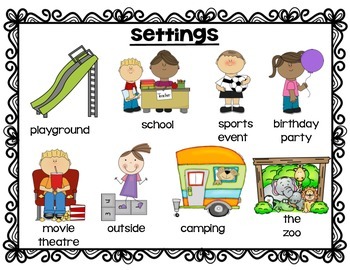

I like to re-read the book again because students are now able to focus on story elements, rather than the suspense of the book, because they know what to expect. When you re-read the book, be sure to ask students to keep in mind the story elements they just learned.
Story element chart free#
Hint: Click here for a free story elements planner, and click here for a great ELA lapbook for quick student reference, with plot diagram. This helps give students a visual understanding of what they are going to learn. I like to start out by introducing a plot diagram with all of the main story elements labeled and defined. Introduce the concepts of story elements.– “The Story of Ferdinand” by Munro Leaf. – “The True Story of the 3 Little Pigs!” by Jon Scieszka. – “A Case of the Bad Stripes” by David Shannon. Hint: Here is a list of a few books that I enjoy teaching with along with a link to aYouTube read aloud. If you want to learn more about why I love picture books, See my previous blog post When students feel comfortable, they will read and reading helps them become better readers. I find this really helps with my struggling readers, as they often attempt to pick up books far beyond their ability level, and spend more time staring at the pages than they do actually reading. This also helps to reinforce that reading ANY book is positive. It allows students to really enjoy the book and listen to the story without thinking about the lesson and story and getting lost. Read the book before introducing the lesson. I like to read my class a short little picture book that is interesting and captivates their attention (you will use this book to later teach the concepts of story elements). Read a short picture book to your class (yes a picture book!).Hint: It starts out with a read aloud picture book. How do you help students understand story elements? The plot diagram is a go to classic…but HOW are you using it? I’ll give you a few tips to really knock this one out of the park.


 0 kommentar(er)
0 kommentar(er)
